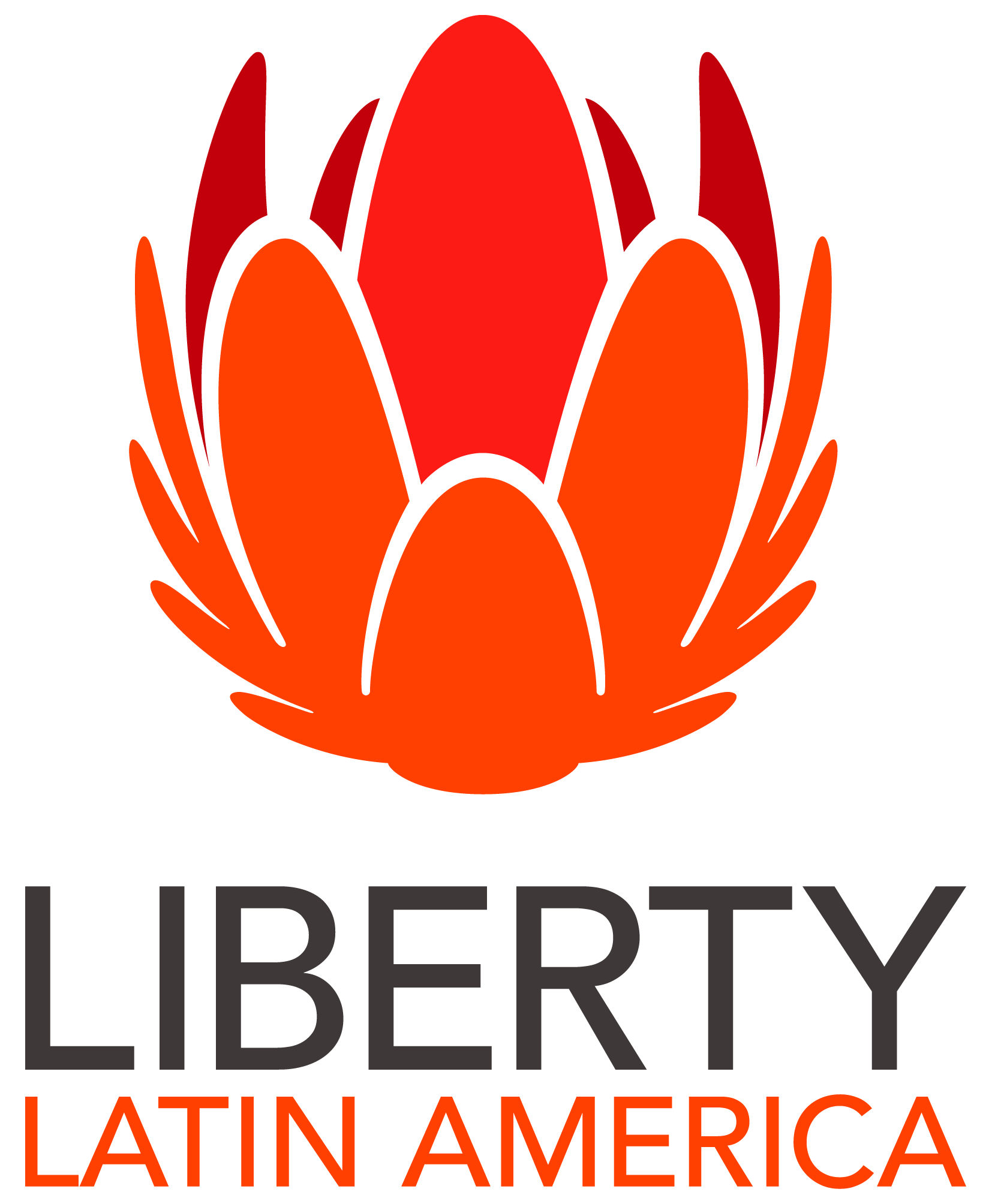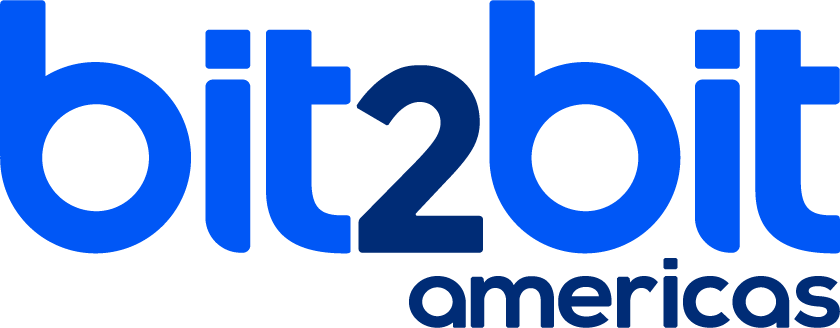
Liberty + Atlassian
Regarding the quality control report, if we used to take 4 hours to generate the execution report, now, if the data is up to date, it takes less than 5 minutes.
Shikha Handa
Director of Software Quality, Liberty Latin America
70%
TBD
reduction in email exchange during the change management process
10
TBD
reporting hours saved each month for Project Managers
96%
50
reduction of testing hours
Industry
Internet/Telecommunications
Location
Central America, Latin America
Number of Users
1,400
Solution
ITSM, DevOps
Atlassian Products
Atlassian Customer
Solution Partner
Liberty uses Atlassian Cloud to reduce complexity and work as a single team, connecting diverse teams and areas distributed in more than 20 countries
See how this Latin American telco created a great cloud platform based on Jira capable of supporting ITSM, DevOps and development teams of different businesses.
When Liberty, the leading telecommunications company in Latin America and the Caribbean, decided to accelerate its expansion through the acquisition of other local companies, it began to deal with a scenario of increasing complexity.
Liberty is a market leader in Chile, Puerto Rico and the Caribbean, the group now has tens of millions of customers throughout the region, distributed among different lines of business and local brands in telecom, cable TV, broadband, mobile, corporate services and even submarine cables.
The wide distribution of services across the region and across different types of business increased the challenge of aligning multicultural teams and standardizing the processes that supported more than 15,000 professionals spread across around 20 different countries.
At that time, the company already had Jira initiatives present in some of the business units, in self-managed models, and decided to bet on Atlassian Cloud to achieve several goals at once:
- Create a single source of information for all businesses and regions
- Maintain quality and agility in operations
- Reduce the complexity of change management
- Eliminate maintenance workload for local instances
- Ensuring that different teams, businesses and operations work as one team
Our business users loved the new processes, they now have a portal where they can log in and track requests from start to finish. Before, orders had to be made by form or email, which is very difficult to track.
Shikha Handa
Director of Software Quality, Liberty Latin America
Ambitious goal: balance agility and control in international operations
Liberty has always known that well-designed processes and team alignment are essential for business success, but the company's fast pace of growth has made this journey increasingly complex. To face the new scenario, the company set a daring goal: to find the ideal balance between agility and control.
The company needed a structure capable of centralizing demand management, standardizing processes and guaranteeing compliance with quality standards in teams distributed across several Latin American countries and, at the same time, guaranteeing the flexibility of agile teams to maintain agility in the deliveries. It was necessary to have a centralized view of all the projects across the eight brands that make up the group to facilitate control without this becoming an obstacle to operations.
To achieve this, Liberty based the plan on a robust set of solutions and apps from the Atlassian marketplace: Jira and Bitbucket for development and DevOps teams, Jira Service Management for ITSM, Confluence for documentation and knowledge management, Xray for test management and Atlassian Guard for unified authentication from different domains.
“We knew that basing the platform on the Atlassian ecosystem would make things simpler because integrations are easy and the entire chain works seamlessly, as if it were a single product,” explains Shikha Handa, Director of Software Quality Managment at Liberty.
Shikha explains that choosing the tool chain was an essential step, as each solution played an important role in creating the platform Liberty needed. In addition, the open and collaborative approach to implementation was just as important to the success of the initiative.
Jira Communities: Collaboration as a Key to Change
Jira had been present at Liberty for a few years, but its use was restricted to the quality areas, for test case management and release management.
As the business expanded, processes became overly complex and Liberty had to rethink the way teams worked.
Shikha says that the company had already had an unsuccessful experience of trying to redesign processes and standardize procedures from the outside in, but the lack of real engagement in the changes meant that the news was not well absorbed by the teams.
In this context, Shikha made the decision to bet on building a platform with the teams instead of for the teams and connected with bit2bit Americas, Atlassian Platinum Solution Partner to put Atlassian at the center of this transformation.
Thus, it would be possible to involve employees from the mapping of processes to the configuration of systems, making clear the advantages for internal and external customers.
The process would involve several people from all 20 distributed teams, representing the 1,400 individuals who would be directly impacted by the transformation that was intended to be implemented.
Shikha says that she created Jira communities in all areas involved, so that the employees themselves were responsible for adopting the tool in their sectors.
“In each community, we selected Jira enthusiasts, the ‘champions’, recommended by their peers, who acted as points of support for their peers,” explains Shikha Handa.
Shikha says that the open and collaborative approach allowed the teams to transparently debate, as a single team, understand the pros and cons of each decision, make small adjustments to processes and tools, and truly feel equally owner of the platform.
Today, if a CIO wants to see how many projects there are in the cable and wireless areas, or filter how many are being operated in Costa Rica or Puerto Rico, it is very easy, as we have a complete view of what is happening in a single dashboard.
Shikha Handa
Director of Software Quality, Liberty Latin America
Cloud migration: accelerated scalability
The strategy worked and the adoption was very fast, in a short period of time the teams realized the advantages of a centralized system and how much easier the work became.
With this encouraging result, a few months after the start of the project, Liberty already felt safe to migrate its Jira to the cloud, scaling the system and accelerating the adoption of the tool in the countries.
According to Shikha, the migration to Jira Cloud has reduced the dependence on external providers, expanding the ability of the teams themselves to evolve the platform in a simple way with the use of templates and no-code automation resources.
Full work visibility with centralized information
The new cloud platform focused on different projects from different business units of the company and made it possible to monitor developments in real time.
Shikha says that the team took advantage of Jira's end-to-end integration to create dashboards that allow managers to have a quick and comprehensive view of the service indicators.
“Today, if a CIO wants to see how many projects there are in the cable and wireless areas, or filter how many are being operated in Costa Rica or Puerto Rico, it is very easy, as we have a complete view of what is happening in a single dashboard. "

Liberty’s filter panel
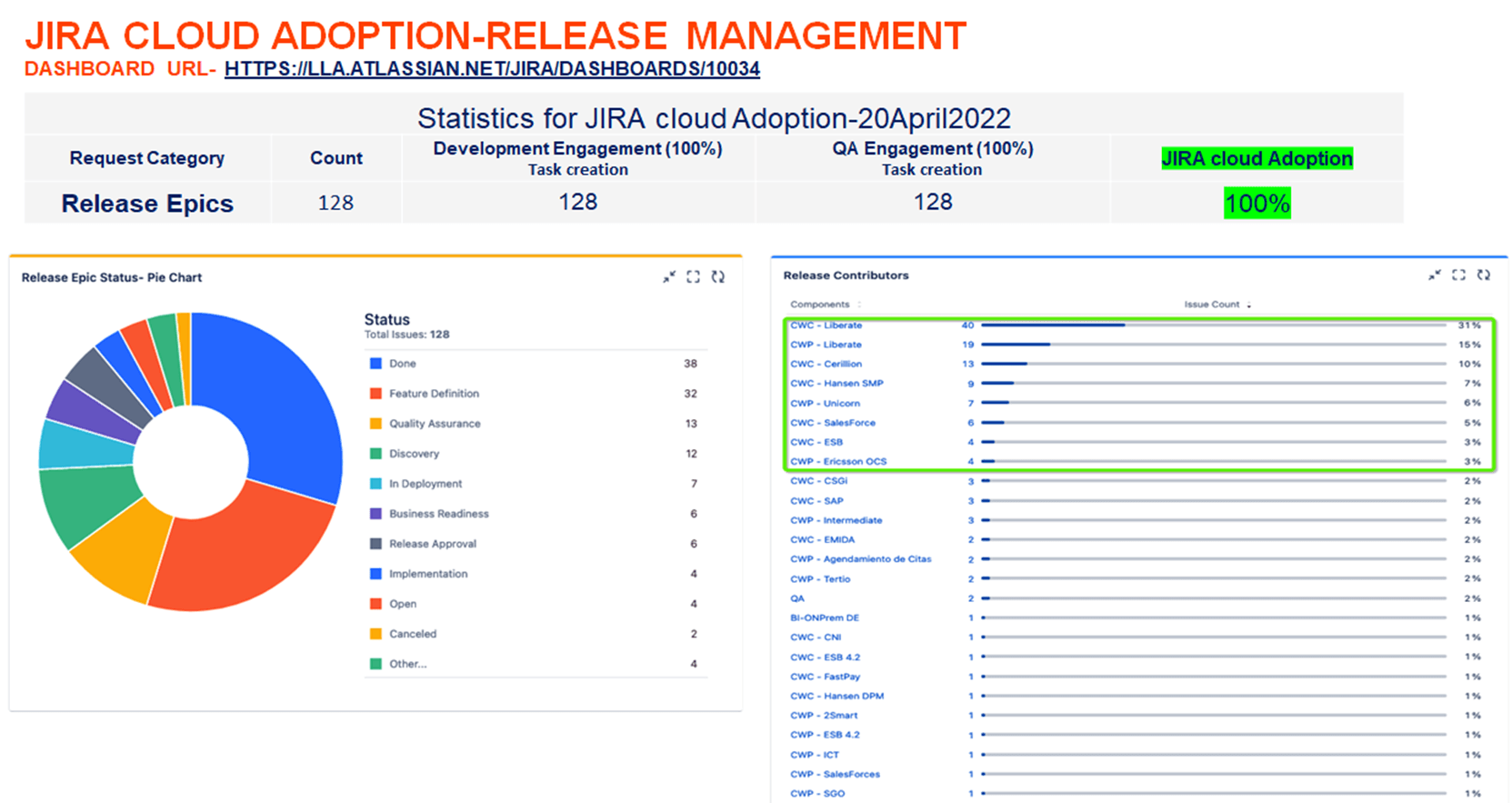
Liberty’s Management Dashboard
Shikha comments that Jira put data in the hands of all areas and practically eliminated the need to search for information about each operation individually, which makes the day-to-day activities of the teams much easier.
With just the generation of reports, the team estimates that more than 10 hours per month were saved by the Project Manager, since before, for the biweekly reviews, it was necessary to manually make more than 40 progress reports and 20 slides.
And by leveraging the capabilities of Jira Plans, included in Jira Premium, teams and managers also gained a detailed view of projects, allowing them to understand how teams are structured and check all dependencies.
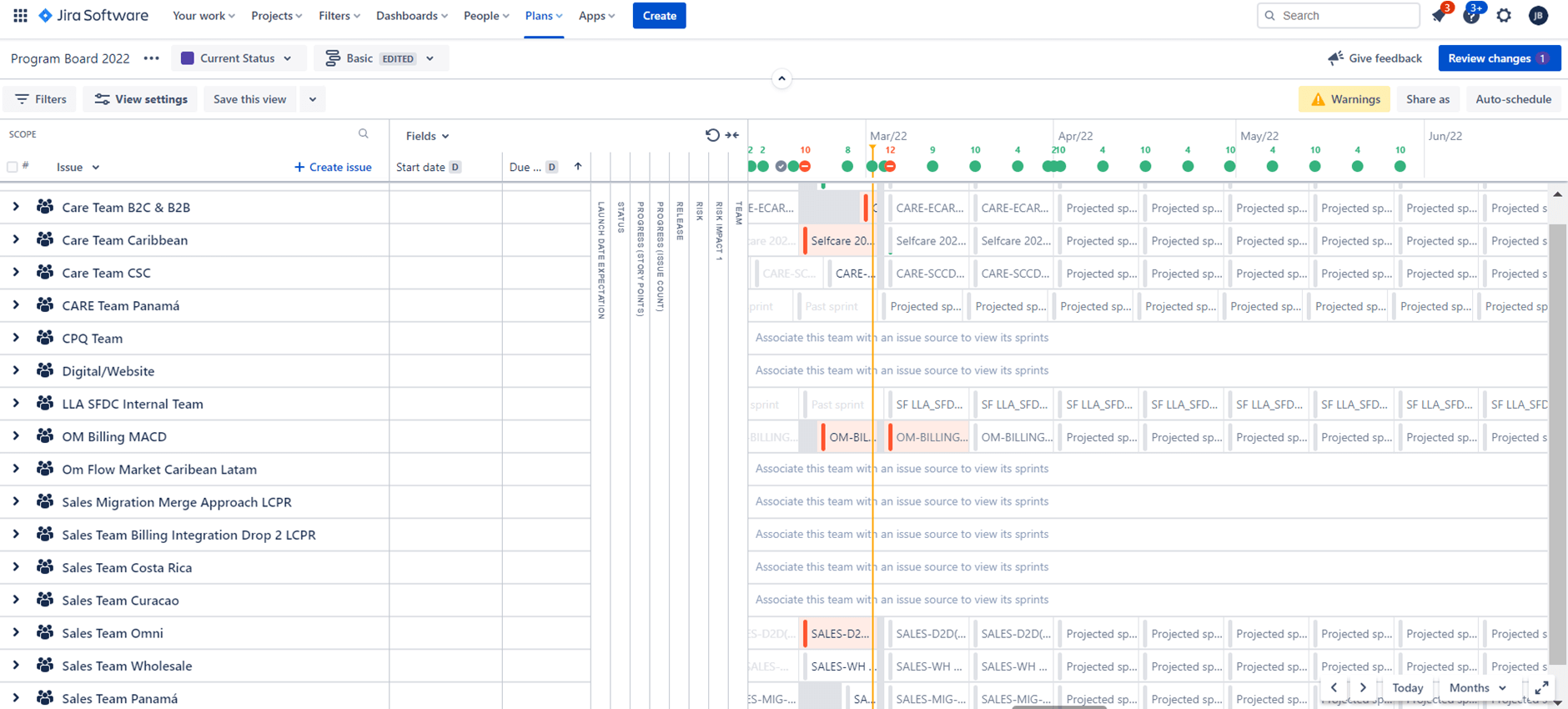
Advanced Roadmap
DevOps: automatic update of indicators with every code update
When it comes to DevOps, information points to collaboration, automation and speed. In order to speed up the work of the teams, Liberty chose to add Bitbucket, Atlassian's version control tool, to the ecosystem, precisely because of the ease of integration with Jira.
Thus, with each code modification consolidated in Bitbucket, the status of the tasks is automatically updated in Jira and the release notes are published in Confluence, relieving the team from the duty of manually recording the updates. At Liberty, currently, 95% of the entire backlog is already registered in Jira: there are almost 30 registered items and 60 projects created.
Shikha comments that they have also taken advantage of the Atlassian Marketplace to add additional capabilities to their Cloud platform and ensure a system perfectly adapted to their needs, facilitating the processes of compiling, testing, configuring and deploying software.
For test automation, for example, Liberty now uses Xray Test Management for Jira, in which a test repository was created, grouped by application and functionality, allowing for reuse, adhering to all workflows.
Therefore, all tests can be categorized, prioritized, assigned to components and have comments like any other Jira items: “With Jira, we can follow the entire lifecycle of products in a simple and centralized way”, highlights Shikha.
Also, according to Shikha, before having the centralized repository, people used to save test cases on their local machines. On average, it took 3 days to put together the regression test plan, but with the repository, the effort is only 3 hours.
“Regarding the quality control report, if we used to take 4 hours to generate the execution report, now, if the data is up to date, it takes less than 5 minutes”, adds Shikha.
A big advantage of Jira Service Management is the ability we have to make improvements in-house, using templates, flows and no-code automation. This reduces our dependence on vendors and accelerates the transformation.
Shikha Handa
Director of Software Quality, Liberty Latin America
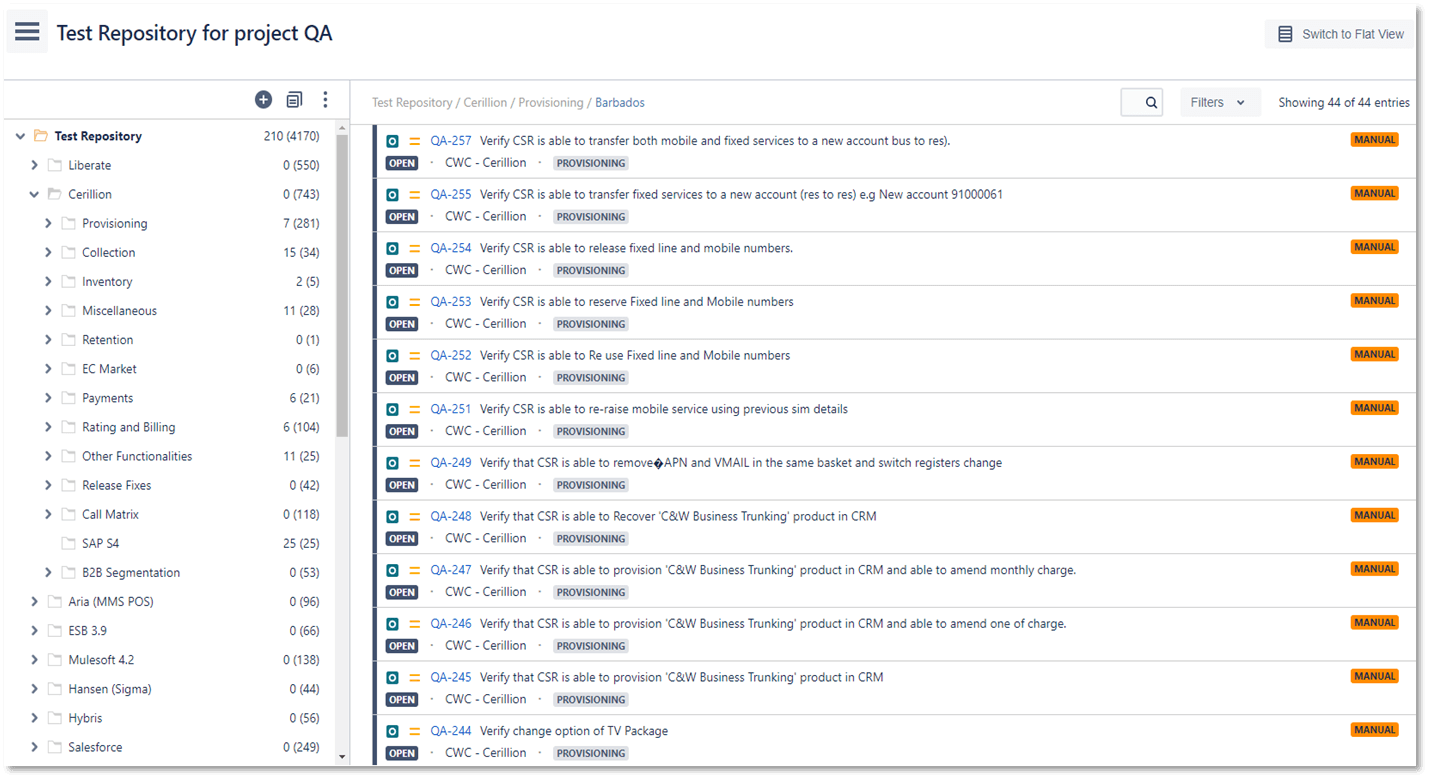
Liberty’s Test Repository
Reduced ITSM complexity with end-to-end integration
One of the main challenges faced by large companies is managing the flow of information and the traceability of this data, and with Liberty the scenario was no different..
After adopting Jira Service Management, being able to concentrate all phases of the change process in the same ecosystem, from the receipt of demands by the IT team to the final solution, was one of the company's main gains when adopting Atlassian tools.
“Our business users loved the new processes, they now have a portal where they can log in and track requests from start to finish. Before, orders had to be made by form or email, which is very difficult to track,” recalls Shikha.
At the telecommunications company, this measure made it possible to automate several approval flows, reducing the use of e-mails in the change management process by around 70%.
Today, everything is easier. Once the order is registered in the Jira Service Management portal, the project manager assigns those responsible for each approval, and warning notifications are automatically triggered to assignees. Once approved, the demands immediately pass to the implementation queue, in a continuous flow, without bottlenecks.
According to Shikha, the solution delivered value to everyone in the chain: users gained an intuitive portal to generate and check their tickets, managers now have a simple way to follow changes and prioritize demands in a fluid and continuous way, and technical teams can deliver faster, with more visibility of the work, more organization and less volume of emails and calls.
Unified authentication for users from 15 different domains with Atlassian Guard
Another challenge to be overcome in international operations is the unification of accesses. As Liberty operates in some countries with its own brands and businesses, users from 15 different domains had to be able to access the centralized system. A task that became much simpler with Atlassian Guard, Atlassian's Identity and Access Manager (IAM).
With Atlassian Guard, it was possible to organize and configure security policies for all users in the company, connecting different domains to the products in a centralized and secure way, with the administration of all accounts in one place.
A future-proof cloud platform
By combining the capabilities of Jira, Bitbucket, Jira Service Management, Confluence, Atlassian Guard and Atlassian marketplace solutions with a collaborative and transparent approach, Liberty was able to create a unified, scalable, secure and flexible cloud platform.
According to Shikha, “the option to place Atlassian Cloud at the center of operations allowed us to integrate areas, businesses and different teams, reduce complexity and create the unified structure that Liberty needs to continue growing aggressively, and always evolving.
We use Jira as a central point for different teams and areas and this makes us work as one great team and gives us information to continually evolve."
The consolidation of the Liberty Latin America team integration project has allowed telecom teams to focus on improving processes to go even further.
“We have recurring meetings with the leadership and we talk about what is going well and what can be improved. The changes are all recorded in the backlog and we are releasing the improvements. We receive continuous feedback from the teams and this helps us to keep improving the ecosystem”, explains Shikha.
Among the improvements, Liberty plans to further explore the possibilities of newer deployment tools such as Jira Service Management. Within less than three months of adoption, 100% of Liberty's demand management operations were being handled via Jira Service Management.
Shikha says that after the successful adoption of Jira Service Management for demand, support and change management, the plan is to embed incident management in the tool, paving the way for centralized visibility of this ITSM practice as well.
Another advantage that has excited Liberty's teams is the ease of adjusting the solutions to the needs of the business, leveraging the capabilities of Jira Service Management.
“A big advantage of Jira Service Management is the ability we have to make improvements in-house, using templates, flows and no-code automation. This reduces our dependence on vendors and accelerates the transformation”, says Shikha.
With an approach of continuous improvement, Liberty Latin America evolves its technology platform every day, exploring the full potential of Atlassian Cloud to reduce complexity and support a dynamic, multiple and distributed business, working as a single team.
